Peter MALONE
Saturday, 09 October 2021 13:01
Nothing But the Truth/ 1941
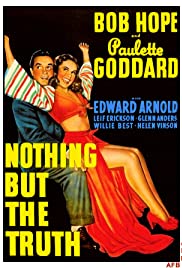
NOTHING BUT THE TRUTH
US, 1941, 90 minutes, Black-and-white.
Bob Hope, Paulette Goddard, Edward Arnold, Leif Erikson, Helen Vincent, Willie Best, Glenn Anders, Grant Mitchell, Rose Hobart, Clarence Kolb.
Directed by Elliot Nugent.
This is a Bob Hope comedy from early in his film career. It was made at the time he was appearing with Bing Crosby in the early Road films. His co-star is Paulette Goddard with whom he had appeared in The Cat and the Canary as well as The Ghost Breakers.
This film is based on a play, relying for its impact on dialogue as well as comic situations. Bob Hope is slightly more heroic in this one, a man of principle who always tells the truth. There is less of his vanity and cowardly streaks as in other films.
This is the world of big business and frauds, especially embodied by Edward Arnold, who had done this was to do this in many times. Leif Erikson is in love with his niece. Glenn Anders is married to the boss’s daughter but is flirting (or more) with an actress from New York City. Bob Hope’s Steve Bennett is invited into the company, hoping that he will invest, as well as his clients, in a fraudulent mine in New Mexico.
However, the main thrust of the film is a bet that that the three make with Steve, that he will tell the truth for 24 hours. Steve invests charity money entrusted to him by the boss’s niece in the bet, Gwen, Paulette Goddard, who is being pursued for the cash by the charity boss.
Most of the action takes place on the rich man’s yacht, well-to-do people at dinner, the three men tantalising Steve, asking all kinds of questions. There are extraordinary number of mixups, misinterpretations, wrong cabins, stealing clothes and having to wear a female dressing gown… But, of course, all is well at the end.
Of interest is the presence of Willie Best, an African- American character actor, given some stereotypical situations but also given a more substantial character, friend of Bob Hope, looked down on by the wealthy, but appreciated by hope and Paulette Goddard (with whom he had appeared in other films).
1. Bob Hope comedy of the early 1940s? At the beginning of his comic screen career?
2. The Florida setting, business and offices, theatre, the yacht? The musical score?
3. The business atmosphere, TT Ralston and his schemes, the quicksilver mine, easy money, getting Steve Bennett and his clients, his son-in-law, and Van Dusen wanting to marry his niece? Avoiding his niece and her charity collections? Edward Arnold and his doing this role so often?
4. Steve Bennett, working with Samuel, Willie Best as a screen performer, part of the stereotype of the past, yet a substantial character, looked down on by the business people, working as partner with Steve, Gwen and her pleasant interactions? Issues of racial African- American stereotypes on screen? Samuel and his work, conversations with Steve, the luggage, the pictures, the fishing…?
5. Steve and his telling the truth, the three challenging him, the bet? Gwen approaching him, the $10,000, safe keeping, investment? Steve taking on the bet? The avaricious attitude of the others? Their testing him, all the questions? His going to the yacht? The meal and his having to tell the truth, insulting the hostess?
6. The comedy of the telling of the truth, subterfuges, the further complication with Gwen, with the actress from New York, as his wife, the older ladies trying to reconcile the couple…?
7. The psychiatrist at the dinner, Steve and the dress for the play, their taking his clothes, putting on the dressing down, the psychiatrist observing, his analysis, suggesting sessions?
8. The newspaperman, Steve telling the truth about his editorials, his wanting to get the scoop?
9. Mr Bishop, the charities, wanting the money, deadline, arriving at the yacht, his demands, Steve putting him off?
10. Dick Donnelly, his father-in-law, cheating on his wife, the actress?
11. Van Dusen, snobbish, attitude towards Gwen, hopes?
12. The film based on a play, heavy on dialogue rather than action, and the pleasure of listening to comic verbal dialogue as well as seeing the situations?
Published in Movie Reviews
Published in
Movie Reviews
Saturday, 09 October 2021 13:01
Welcome Home/ 2018

WELCOME HOME
US, 2018, 93 minutes, Colour.
Emily Ratajkowski, Aaron Paul, Riccardo Scarmacio, Francesco Aquaroli.
Directed by Gregory Ratliff.
An American thriller set in Italy and filmed in Umbria, the city of Todi and its countryside. Emily Ratajkowski has appeared in a number of thrillers like Lying and Stealing. Aaron Paul is famous for being in television series such as Bojack Horsemen, Breaking Bad, Westworld. Riccardo Scamarcio is a prominent Italian actor and has appeared in American films like To Rome with Love and John Wick 2.
This is something of a take it or leave it kind of thriller, a couple coming to Italy intending to marry but carrying some baggage of drinking, alcoholic infidelity, hoping to consolidate the relationship. They are taken by mistake to a rambling house and then to what is the equivalent of a very lavish an AirB&B.
A lot of the action is very contrived, Cassie spraining her ankle while jogging, being helped by the neighbour, Federico, who intrudes on their life, charming Cassie and repelling Bryan. There were a lot of scenes where Federico cooks, hosts parties in the town, gets Bryan drunk, sets him up with some glamorous women.
The audience, however, knows that Federico lives in the ramshackle house, but that he has set up a whole range of cameras in the mansion and arranges surveillance screens in his own house.
Ultimately, we see him as not just a voyeur but is an actual sexual predator, a clash with the couple leading to violence, including the death of the man who originally rented them the mansion. They bury the bodies – but the finale sees that Federico’s set up was for online subscribers and the couple have been filmed extensively, including the burial of the bodies.
As said, a take it or leave it kind of thriller.
Published in Movie Reviews
Published in
Movie Reviews
Saturday, 09 October 2021 13:01
Agatha Christie's Poirot Peril at End House
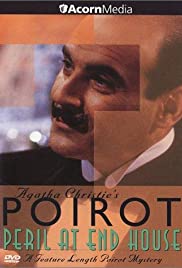
PERIL AT AND HOUSE
UK, 1990, 103 minutes, Colour.
David Suchet, Hugh Fraser, Philip Jackson, Pauline Moran, Polly Walker, John Harding, Alison Sterling, Elizabeth Downes.
Directed by Renny Rye.
This was the first of the four novels to be filmed in the television series of Agatha Christie mysteries with David Suchet as Poirot.
Once again, there is an exotic setting, the Cornish coast, homes, hotels, holidaymakers. Poirot and Hastings are enjoying a holiday. They encounter a very attractive young woman, ‘Nick’ Buckley, played very attractively by Polly Walker. She explains there have been several attempts on her life, the fixing of brakes, a bullet through her hat. Hastings, as always with women, is charmed. Poirot is also attracted.
The young woman lives alone in a mansion, is said to have been engaged to a pilot who is attempting a round the world flight. She has several friends with whom she has parties, and a naval commander who is attracted to her, a lawyer cousin, and a cousin from Yorkshire whom she invites to her house for a fireworks display and a holiday.
The film takes its time in setting up the characters, each friend being rather suspicious. However, it is the cousin from Yorkshire who is murdered, another seeming attempt on Nick’s life. She is taken to the hospital, sedated, secluded in case of another attack.
Poirot investigates. There are various complications, especially with poisoned chocolates. It is also revealed that the group of friends have a cocaine habit, supplied by Harley Street doctor and his nephew, the naval commander.
There is also a subplot with the maid and a groundskeeper, but especially with an Australian couple, (very broad accent) who become involved with Nick’s making of a will. There are various consequences because the pilot was left a fortune by his recently deceased uncle and had made a will before he took his flight.
With the murder, Chief Inspector Japp arrives, as does Miss Lemon.
Nick does seem at times too good to be true – and that is the solution, via a contrived séance with Miss Lemon acting the medium, an ingenious and complex plot for her to get the inheritance from the dead pilot.
1. The popularity of the television series of Agatha Christie mysteries with David Suchet as Poirot?
2. The Cornish setting, the coast, hotels, mansions, beaches, social life? The musical score?
3. Poirot and Hastings on holiday, the continued banter? Miss Lemon and her research, arriving later, Poirot using her for the seance, and her performance as a medium?
4. Nick Buckley, attractive, Hastings’ response, Poirot becoming protective? The threats on her life? Her living in the mansion, owning it? Her lawyer cousin in the town? Her fears? The fireworks occasion, her inviting her cousin from Yorkshire, the cousin being killed? Nick’s collapse, depression, hospital, protected, the chocolates, the threat to her life?
5. Nick’s friends, Freddie a friend from childhood, her relationship with Lazarus and her explanations, the naval commander, his attention to Nick? The allusion to the similar watches? The later revelation that they contained cocaine? The naval commander the agent, getting the drug from his Harley Street doctor uncle? The glamour, parties, all suspects?
6. The news of Nick’s death? The various reactions? Her will, her relationship with the pilot, his inheriting the money from his uncle, his death, his will?
7. The Australian couple, the broad accent, the wife in the wheelchair? Witnessing the will? Nick’s will, the bequests to the Australians because of kindness to her father in Australia? The wife contriving the will? The ignorant husband?
8. Poirot gathering everyone together, for the revelation? His suggestion about the seance, Miss Lemon and her performance? Nick arriving?
9. The Australian couple and their being exposed and taken?
10. Miss Lemon and Hastings, their jokes about the variety of possibilities from Christian names? Poirot getting the clue?
11. The revelation, Nick’s name of Magdala, Maggie, her cousin Maggie? The truth about the engagement? The whole plot ingeniously engineered by Nick? Her being taken away, her watch, her death by cocaine?
Published in Movie Reviews
Published in
Movie Reviews
Saturday, 09 October 2021 13:01
Where There's Life
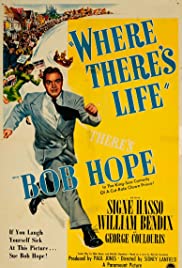
WHERE THERE’S LIFE
US, 1947, 75 minutes, Black-and-white.
Bob Hope, Signe Hasso, William Bendix, George Colouris, George Zucco.
Directed by Sidney Lanfield.
This comedy was typical enough of many Bob Hope features during World War II and in the years afterwards. It was cowritten by Melville Shavelson, a veteran writer for many decades, quite a lot of the star vehicles for Bob Hope at this time, several for Danny Kaye and a number of Warner Brothers musicals from the 1950s. It was directed by Sidney Lanfield who also directed Hope in a number of films in the 1940s, directed films from 1930 to 1952 and then made the transition to a very successful television career including all the episodes of The Addams Family and Mc Hale’s Navy.
Bob Hope plays his usual screen persona, wanting to be dashing, jokes about his fears with the touch of the coward, wanting to be a romantic hero. (And, there is an amusing joke when they pass a poster in the street for Blue Skies with Bing Crosby and Hope’s remark that it was about an old singer before the heroine’s time.)
The film opens in one of those mythical central European small countries, the touch of Ruritania and The Prisoner of Zenda… After the war, the country wants to move to democracy but the King suffers an attempted assassination by a conservative violent group who want to maintain the status quo and their power. It is revealed that the King had a son during a visit to the United States – and, of course, this is Bob Hope, a radio announcer who advertises dog food, has been engaged to his girlfriend Hazel, Vera Marsh, for eight years and is about to get married – and pressurised by his policeman brother-in-law, William Bendix.
The action actually takes place in New York City when the female general, Signe Hasso, goes to find the presumptive heir, along with the group including the Prime Minister (George Colouris who is obviously going to turn out a villain). The other villain is the consul in New York, played by George Zucco.
On the one hand, there is the comedy of the family pursuing Hope, thinking that he is pulling out of the wedding, not believing his story about being the King, about the secret society pursuing him with attempts on his life.
On the other hand, there is going to be a romance with the general, especially when she has to spend the night in hiding in the hotel, wearing one of his shirts. There is a pursuit around the city, especially a long sequence in a department store where the general buys address and Hope is smitten, and a long gag where to escape, he has to pose as a mannequin in a row of them wearing hats, the subject of inspection by a very snooty wife, played by Norma Varden.
There is also a sequence where by mistake, Hope in his attempt to escape from the gang who have imprisoned him in a basement, is mistakenly chosen to be the assassin.
Nothing particularly startling – but a pleasant reminder of Bob Hope, his popularity in films and his comic style.
Published in Movie Reviews
Published in
Movie Reviews
Saturday, 09 October 2021 13:01
Petit Poucet, Le/ Tom Thumb

LE PETIT POUCET/ TOM THUMB
France, 2001, 90 minutes, Colour.
Nils Hugon, Hanna Berthaut, Romane Bohringer, Pierre Berriau, Dominique Hulin, Elodie Bouchez, Sami Naceri, Catherine Deneuve, Said Taghmaoui.
Directed by Olivier Dahan.
While the English translation of the French title is Tom Thumb, this Tom Thumb should not be mistaken for PT Barnum’s dwarf in his circus.
This is a very cinematic version of fairytale by Charles Perreault, so well-known for his range of fairytale is including Cinderella. While there is a sense of realism with actors performing the characters, the settings are quite a blend of realism and the stylised. Many of the scenes are like dioramas, quite artificial colours in the background with a touch of the surreal, and often, the characters in the forefront, almost like cutout figures.
The story is told from the point of view of the adult Poucet, voiced by Michel Dauchoussey. He narrates what is going on but also looks forward to the future life and adventures of Poucet, ultimately telling the audience of what happened to all the characters.
The context is a poor family, farming, a severe father, Poucet being the youngest child and picked on by his father and his brothers. But the context is also that of war, a severe invasion led by an ogre-like warrior with an iron leg who robs the family of all their food. The next military wave is of those of the kingdom, loyal to the Queen. The father decides that the boys must die, the mother unwilling, but consenting, taking the boys into the woods to collect firewood and then abandoning them. However, Poucet has filled his pockets with stones, dropping them and so able to lead the boys back home. And the Queen’s accountant distributes coins for the poor. The family have food for a while – and then the father decides to repeat the abandoning of the children.
Poucet takes breadcrumbs but they are eaten by animals and birds, the boys lost again, pursued by ravenous wolves, eventually finding the Castle of the ogre, helped by his wife, but threatened by the ogre planning to eat them. However, in the pursuit, the ogre with his seven league boots, the ogre is con fronted by Pucet who then takes the boots, is able to fly through the air, bears a letter to the Queen, a letter which brings peace to the kingdom.
There is a strong French cast including Romane Bohringer as the mother, Catherine Deneuve as the Queen, and the young Nils Hugon being a strong but unobtrusive Poucet. The film was directed by Olivier Dahan who went on to make the story of Edith Piaf, La Vie en Rose, as well as Grace of Monaco with Nicole Kidman.
1. The fairytales of Charles Perreault? From the 18th century? Their context? The touch of the fairy? The touch of the terror?
2. This adaptation for the screen? Not a tale for children, too frightening? A tale for adults who remember the story?
3. The visuals of the setting, like paintings, like dioramas? The realism? Stylised? The range of colours and their use? The background scenery, the seasons, days and nights, the forest? The interiors of the house? The house of the ogre? The mountainside? The scenes of war? The Palace and the Queen? The final triumph? The musical score?
4. The 18th century setting, France, the poor farmers, the parents, the stern father, the loving mother, providing? The father severity with the boys? Especially with Poucet? The daily grind? The hard work, the moments of plague? Teasing Poucet?
5. The role of the military, the soldier with the iron leg, like an ogre, his severity and cruelty, taking all the food, military ambitions, his retinue? His treatment of the parents? Of the children? Leaving one bag of oats? The next military wave? Taking the oats? Conquest?
6. The dilemma for the parents, the father and his decision for the children to die, going into the forest? Poucet and his taking the stones, the children seeking wood, the dark, being lost, Poucet able to bring them back home? The mother’s response??
7. Poucet, falling in the mud with his brothers teasing, in the forest searching for kindling, encountering Rose, their talk, the frog, the Prince, her giving him the angel’s feather in the tear? His treasuring this? Her disappearance?
8. The Queen’s treasurer, the distribution of the coins, the return of the children? The food, their being satisfied? Its running out? The renewed decision, Poucet taking the crumbs for the return journey, the birds and animals eating the crumbs? Lost?
9. Fear of ogres, searching, climbing the trees, the night, the pursuit by the wolves, the violence of the ravenous wolves? The boys surviving?
10. Seeing the fire, going to the home, the encounter with the mother, her fears, welcoming them, concealing them in the chest? The arrival home of the ogre? His smelling the
children? Finding them? Wanting to eat them? His four daughters, ogres with their teeth? The distraught mother? Rose and her arrival, not wanting to be an ogre, different from her sisters?
11. The postponing of the ogre’s meal, the children in bed, the ruse of taking the dolls, in the boys’ bed, the father killing his daughters?
12. The ogre, his vengeance, his seven-league boots, the boys and their escape with Rose, in the mountains, the dangers? The confrontation with the ogre? Poucet and the confrontation, taking the boots, the ogre falling over the cliff, Poucet putting on the boots, their becoming smaller, his ability to leap through the air? The military, giving him the letter for the Queen?
13. In the palace, the Queen and her dignity, wanting to stop the war, her officials wanting to prolong it, Poucet arriving with the letter, the Queen and her decision? Peace? The honours for Poucet, the Knighthood, the clothes, his returning to his village, reunited with his family?
14. The telling of the story, the adult Poucet and his voice-over, reflection on his story, the aftermath for the family?
15. A cinematic way of telling a fairy tale?
Published in Movie Reviews
Published in
Movie Reviews
Saturday, 09 October 2021 13:01
In the Tall Grass
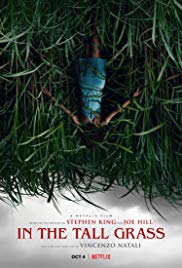
IN THE TALL GRASS
US, 2019, 101 minutes, Colour.
Harrison Gilbertson, Laysla de Oliveira, Avery Whitted, Patrick Wilson, Will Buie Jr, Rachel Wilson.
Directed by Vincenzo Natale.
This thriller is based on a novel by Stephen King writing with Joe Hill (the pen-name of Stephen King’s son). There is a quote from the director about not expecting grass to be mysterious and about the transformation of an ordinary field in Kansas into a sinister place.
The plot is very complex, mysterious, timeshifting, place shifting. The basic story is of a young woman with her boyfriend (played by Australian Harrison Gilbertson) travelling to a destination where the young woman can give birth. They go into the mysterious grass when they hear the crying of a young boy. This leads to rather mind-bending situations with a continual search for the boy, his appearance and disappearance. There is also the unexpected arrival of the young woman’s brother, acting in a sinister way.
Time seems to be going in a circle. The characters continue to be lost in the grass. The young boy is found, is lost. Part of the action also takes place in a church, sinister also rather than a haven again with some mysterious characters leading to violence.
Obviously this is a film which those who want to see every story from Stephen King. In many ways, they will be pleased with its often back baffling complexities.
1. The title? The opening visuals, the overview, then within the tall grass, driving through the open fields? The emotion of the characters in the grass, not being able to get out, lifting the boy on the shoulders to try to see a possible exit?
2. The American countryside, the grass and the crops, the paths? The symbolic rock, the illustrations, the comment on its being the geographical centre of the US? The past, humans in the area, the visualising, the grass characters and the rituals and dance? The supernatural themes?
3. The ordinariness of the opening, Becky and her pregnancy, travelling with Carl, her brother? The revelations of their going to San Diego’s for the baby’s adoption? Their stopping, Becky sick, hearing the voice from the grass, dropping her book, Carl and his going into the grass, Becky following?
4. The timeline, the cyclic aspect, going back to beginnings, characters trapped in the grass, the erratic timeline?
5. Cal, the search, in the mud, the dead dog, Freddie? Tobin’s voice and crying? The couple trying to locate Tobin?
6. Time passing, night and day, the couple lost, the lost sense of time? The introduction of Ross and his wife, the real estate business? The dog going into the grass, Tobin following, the mother going in, the clash between husband and wife? His being on the phone? Going in?
7. Travis, his arrival, the father of the child, abandoning Becky, his change of heart, the long time passing, his going to search for her, finding the car, the book? His going into the grass?
8. The transformations inside the grass, Ross, touching the rock, his dominance, care for his son, clashes with his wife, the encounters with Carl and Becky, his violence, his dominance, his vision? Going into the building, the pursuit? Back into the grass, his violence, Becky and his eyes? His killing his wife?
9. The deeper story about Carl and Becky, Travis and the accusations, Cal and his obsession with his sister, intimations of incest desires? Travis, the abandonment, his return? Becky, the pregnancy, the time, the imagination of birth? In the building, the church and the locked door, Travis on the roof, Carl letting him drop?
10. Travis, his decision, to save the others, touching the rock, their escape, his being possessed by the tall grass?
11. The tantalising situation, the shifts in time, the shift in consciousness, moral issues, the supernatural?
Published in Movie Reviews
Published in
Movie Reviews
Saturday, 09 October 2021 13:01
Lola et Ses Freres
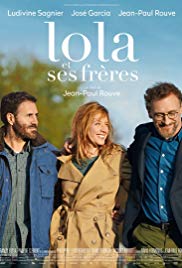
LOLA ET SES FRERES/ LOLA AND HER BROTHERS
France, 2018, 105 minutes, Colour.
Ludivine Sagnier, Jose Garcia, Jean-Paul? Rouve.
Directed by Jean-Paul? Rouve.
Lola and Her Brothers could be described as a typical French family drama. Ludivine Sagnier plays Lola and distinguished French actors, José Garcia and Jean-Paul? Rouve (also the director of the film) play the brothers.
Obviously, there are going to be a lot of conflicts, responsibility and irresponsibility is, workplace crises, a wedding and upsets. While Lola is meant to be something of an anchor in the family for her brothers, she herself has relationship issues – and pregnancy.
French audiences do like this kind of family drama – and it is with those who do like this kind of French family drama.
1. The title, the focus on Lola, her two brothers? Family, family clashes, reconciliations?
2. The French settings, homes and apartments, law courts, building sites and companies, opticians? The musical score?
3. Lola, her age in comparison with her brothers, her legal work, not married, difficult divorce cases and angers, meetings Zoher, the attraction, together, inviting her brothers, their reactions? The meetings with Pierre, his financial difficulties, his son, the arrangements for Benoit’s wedding? Helping his wife after her husband’s obtuse nurse? Going to the doctor, the tests, and not being able to become pregnant, the discussions with So hair?
4. Pierre, the demolition of the buildings, his partner, the urgency to go to his brother’s wedding, his son and the suit, no shoes, the hold-up on the toll, arriving late? The wedding, the dinner, his forgetting is sister-in-law’s name? Referring to the previous weddings? The issue of his business, the cracks in the building, evacuations? Discussions with the boss, his being sacked? His personal life, his former wife, his son going to university? Meetings, trying to reconcile with his sister-in-law? His meeting his former friend, gaining some respect for him, the new job?
5. Meanwhile, the optician, fussy, previous marriages, his work, machinery, the colour for lenses? His assistant? Marrying again, upset at the speeches at the wedding? Obtuse in his manner and comprehension, his wife getting upset, trying to win her back? The collaboration with Pierre? His wife pregnant? The birth?
6. Pierre’s son, young, intellectual, university, reading, decision to leave, motivations?
7. The conflicts, the resolutions? Lola and her being pregnant, her sister-in-law and the two children, time passing, everybody meeting at the end – and harmony?
Published in Movie Reviews
Published in
Movie Reviews
Saturday, 09 October 2021 13:01
Without Honor
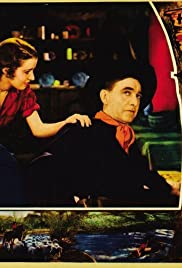
WITHOUT HONOUR
US, 1932, 66 minutes, Black and white.
Harry Carey, Mae Busch, Gibson Gowland, Mary Jane Irving, Ed Brady, Jack Richardson.
Directed by William Nigh.
A very small-budget westerns from the early 30s. While the studios had adapted to sound, westerns like this were still fairly basic, especially in the placing of microphones in static person-to-person sequences. This slows the action – especially when star Harry Carey always pauses before speaking and speak slowly. However, there are some outside action with horses and chases.
The plot concerns a gambler who is on the side of the law. His brother is murdered and framed as part of a bank robbery. The gambler begins to investigate, while also playing his games and winning. His very friendly with the owner of a saloon, makes contact with a suspicious character and is appealed to by his stepdaughter whom he treats with cruelty. There is also a wealthy bank manager.
There is an ultimate resolution with everybody present, a bit like solving murder mystery. The wealthy bank manager is revealed as the mastermind of the plot, especially with the use of a pet dog and his coat being filled with money and travelling easily across the Mexican- American borders. The bank manager has also forged a document giving him possession of a farm which belongs to the owner of the saloon – and ultimate reconciliation with her long lost daughter who is the young woman cruelly done by.
The director, William Nigh, went on to make a number of crime thrillers.
Published in Movie Reviews
Published in
Movie Reviews
Saturday, 09 October 2021 13:01
Lady in the Morgue, The
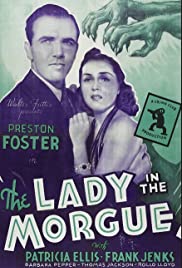
THE LADY IN THE MORGUE
US, 1938, 67 minutes, Black-and-white.
Preston Foster, Patricia Ellis, Frank Jenks, Thomas Jackson, Gordon Elliott, Roland Drew, Barbara Pepper, Joe Downing, Archie Robbins.
Directed by Otis Garrett.
A fairly routine supporting crime feature from Universal Studios in the late 30s. It gives an opportunity for Preston Foster, often an action hero, to be a smart-talking private eye.
A woman is alleged to have hanged herself in a hotel room. The police are not sure of her identity. While they investigate, the private detective is called in, along with his associate, a comic turn from Frank Jenks, a bit slow on the uptake at times, but with an eye for the ladies. The investigator is laid-back, sleeps easily, gets involved in physical action, uses his wits to solve the issue.
In fact, the lady spends a long time not in the morgue. With various parties eager to know who she is, their possible partner, she is smuggled out of the mortuary, buried, dug up…
There are various men who want to know who she is. An urbane gentleman, concerned about his upset mother, wants to prove that the dead woman is not his sister who has left home. There is also another mysterious hostess from a nightclub – and her relationship with a trumpet player. Some attendants at the morgue are also killed, one by accident, the other deliberately to cover the murderer’s identity.
Eventually, the dead woman is the missing sister and the murderer is unmasked – the trumpeter.
Published in Movie Reviews
Published in
Movie Reviews
Saturday, 09 October 2021 13:01
Agatha Christie's Poirot Double Sin
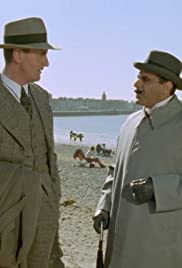
DOUBLE SIN
UK, 1989, 50 minutes, Colour.
David Suchet, Hugh Fraser, Philip Jackson, Pauline Moran, Adam Kotz, Caroline Milmoe, Elspet Gray, David Hargreaves, Gerard Horan, Michael J.Shannon, Amanda Greenwood.
Directed by Richard Spence.
There is no specific reference during the film to its title. And, this is one of the milder episodes in the popular television series of Agatha Christie mysteries with David Suchet as Poirot.
At the end beginning, Poirot seems cantankerous, retiring, urging Hastings to have a holiday – and they travel to Morecambe to the Midland Hotel. There is news that Chief Inspector Japp is to give a lecture – and it emerges that Poirot, not wanting to reveal it, wants to hear the lecture. Poirot is gratified by what he hears.
The mystery of the episode is the stealing of a set of antique miniatures, curated by an elderly lady, taken by bus to a potential American buyer. He buys them in good faith but they are reported missing and they are confiscated and he is under suspicion. Hastings is charmed by the young woman who travels on the bus and he is eager to solve the case. There is a red herring when suspicion falls on an agitated young man who bumps into Hastings, is seen upset, meets with a woman and drives away – with Hastings and the police in pursuit. They are not the criminals.
Poirot has declared that he is retired but eventually, after hearing the praise and the lecture, goes into action, assembles the key characters and unmasks the villain who makes a mistake. She is the elderly lady who react badly when confronted by the buyer.
Attractive scenery, good to see the usual people – and a mild mystery.
1. The popularity of Agatha Christie mysteries, with David Suchet as Poirot?
2. Poirot and his office, the presence of Hastings, Miss Lemmon? The transition to the North, the 30s hotel, bus travel, the roads, the countryside? The musical score?
3. Poirot, saying that he had retired, being grumpy, taking Hastings on a holiday, the Midland Hotel at Morecambe, the interiors? The bus ride, Chief Inspector Japp’s talk, Poirot listening, pleased and satisfied?
4. Mary, her aunt, her aunt and wheelchair, the miniatures, Mary travelling to sell them, chatting with Hastings and Poirot, her leaving the cafe and checking the case, the disappearance of the miniatures?
5. The red herring of the young man with a moustache, bumping into Hastings, at the hotel, waiting, suspicious, his phone call, the woman coming to collect him, the fast car, pursued by Hastings? The irony of her identity, novelist, their eloping?
6. The businessman, his buying the miniatures, the arrival of the police, the interrogation, confiscating them, the certificate, under suspicion? His arrival at the restaurant? Unmasking the aunt?
7. Mary, Hastings and his gallantry, trying to solve the mystery, the suspicions of the young man, his possible disguise as an elderly woman? The American buying the miniatures in good faith?
8. Hastings, with the local constables, keeping vigil, the pursuit? Hastings wrong?
9. Poirot and the arrangement for the meeting, Mary and her aunt, the constables in plain clothes? Mary and the aunt arriving? The previous meetings with Poirot and her being charmed by him? The arrival of the American, the aunt making the mistake, getting up out of the chair, and Mary running as well?
10. A lower key story than usual?
Published in Movie Reviews
Published in
Movie Reviews